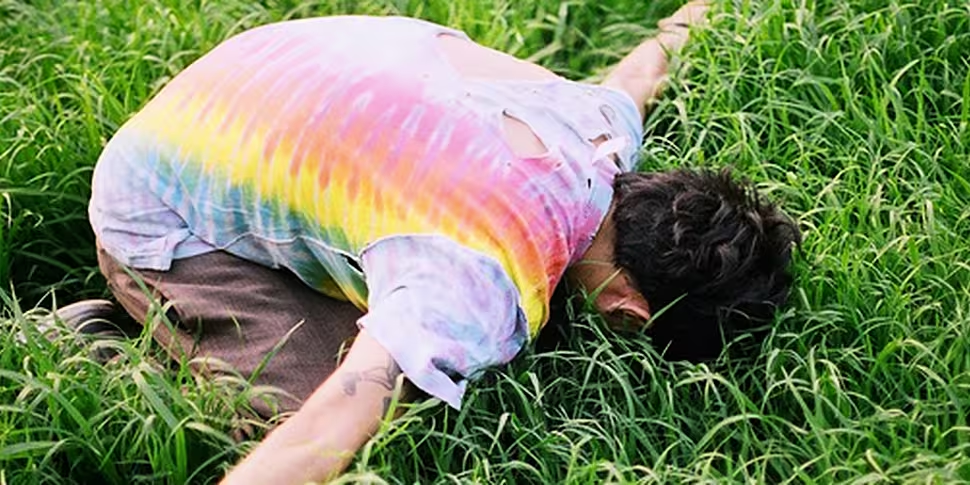Every Thursday on the Right Hook, George is joined by Bill Hughes to take a listen to some of the essential songs of the 20th century. Now, operating under a new format, Bill will be gently prodding George to appreciate three songs that were hits on this day in the past, while taking in some of the historical events happening at the same time.
This week’s date in April 19th, 1987, and the songs are La Isla Bonita by Madonna, The Irish Rover by The Pogues and The Dubliners, and Sign o’ the Times by Prince.
Tune in live from 6.30pm, or listen back to the podcasts here.
As days in history go, today is not without its noteworthy events. But only one of them involves a trip.
Albert Hoffman didn’t know what was wrong with him, but the Swiss chemist wasn’t feeling altogether himself. Restless and dizzy, he left his laboratory and made his way home, crawling under the covers. And that’s when it hit him – a “not unpleasant, intoxicated-like condition characterised by an extremely stimulated imagination.” Otherwise known as an acid trip.
As a man of science, Hoffman retraced his steps and wondered whether his experience had anything to do with the lysergic acid diethylamide he had accidentally spilled onto his hands that day. Turns out it was the LSD.
The Swiss scientist had first synthesised the potent drug some five years earlier as a potential aide to those with respiratory disease. Having failed to offer any relief, Sandoz Pharmaceutical, the company Hoffman worked for, stopped tinkering with the formula. A few days later, having just experienced the world’s first trip, Hoffman consumed more of it to make sure his suspicion was correct.
His second dose was not as pleasant, and Hoffman experienced peaks of anxiety, and had to be accompanied home by a lab assistant. By the time he reached the door, Hoffman’s grip on reality was fading and he was convinced his next-door neighbour was an evil witch. His doctor was summoned, but could find nothing physically wrong with the tripping Hoffman, whose condition suddenly improved.
“Kaleidoscopic, fantastic images surged in on me, alternating, variegated, opening and then closing themselves in circles and spirals, exploding in coloured fountains, rearranging and hybridizing themselves in constant flux ..."
That’s how the aftermath of his second experiment was described in his notes.

Albert Hoffman and his formula for LSD [Flickr/strikerr]
Perhaps, Hoffman thought, LSD would make a good tool for treating people with psychiatric illness? He never would have conceived that anyone would want to experience its effects for recreational purposes. Presenting his findings to his employers, Sandoz patented the drug in 1947, specifically marketing it to psychiatrists – who they recommended sample the product in order to better grasp its potency.
LSD struck an immediate chord with the scientific community, any by 1965, dozens of books and thousands of research papers had been written, along with more than 40,000 patients. And many psychiatrists, who’d started sharing the drug with their friends.
It had also captured the imagination of the secret service, with the CIA seeing the potential of the potent reaction as a chemical weapon. As one of spy agency’s researchers wrote in a now declassified paper, “It
At the same time, intelligence agencies, such as the CIA began studying LSD as a potential chemical weapon because, as one researcher put it: “It (LSD) is capable of rendering whole groups of people, including military forces, indifferent to their surroundings and situations, interfering with planning and judgment, and even creating apprehension, uncontrollable confusion and terror.”
But public panic and moral outrage piled the pressure on Sandoz to stop producing it, and the last batch rolled off the line in 1965. But by then, it was too late to stop its spread, with Harvard psychologist advising the entire world to “Turn on, tune in, and drop out.”
It quickly became embedded into the counterculture as the drug of choice, not officially banned in America until 1966.
Since then, genuine scientific research into the drug’s capabilities dried up, with reputable institutions refusing to offer grant money into the study of a drug that had been officially made illegal by governments around the world.
But LSD might be about to make a comeback on the scientific stage. Almost four decades after the last clinical trial was carried out, the Journal of Nervous & Mental Disease revealed that in a study of 12 cancer patients, many of whom were terminally ill, received doses of LSD to see if it could help them cope with their approaching deaths.
A 67-year-old patient, found the experience transcendental, revealing that why gripped by the drug’s side-effects, he encountered his estranged father, long-since dead, nodding reassurance to him.
Tune in to The Right Hook every weekday from 4.30pm to 7pm









